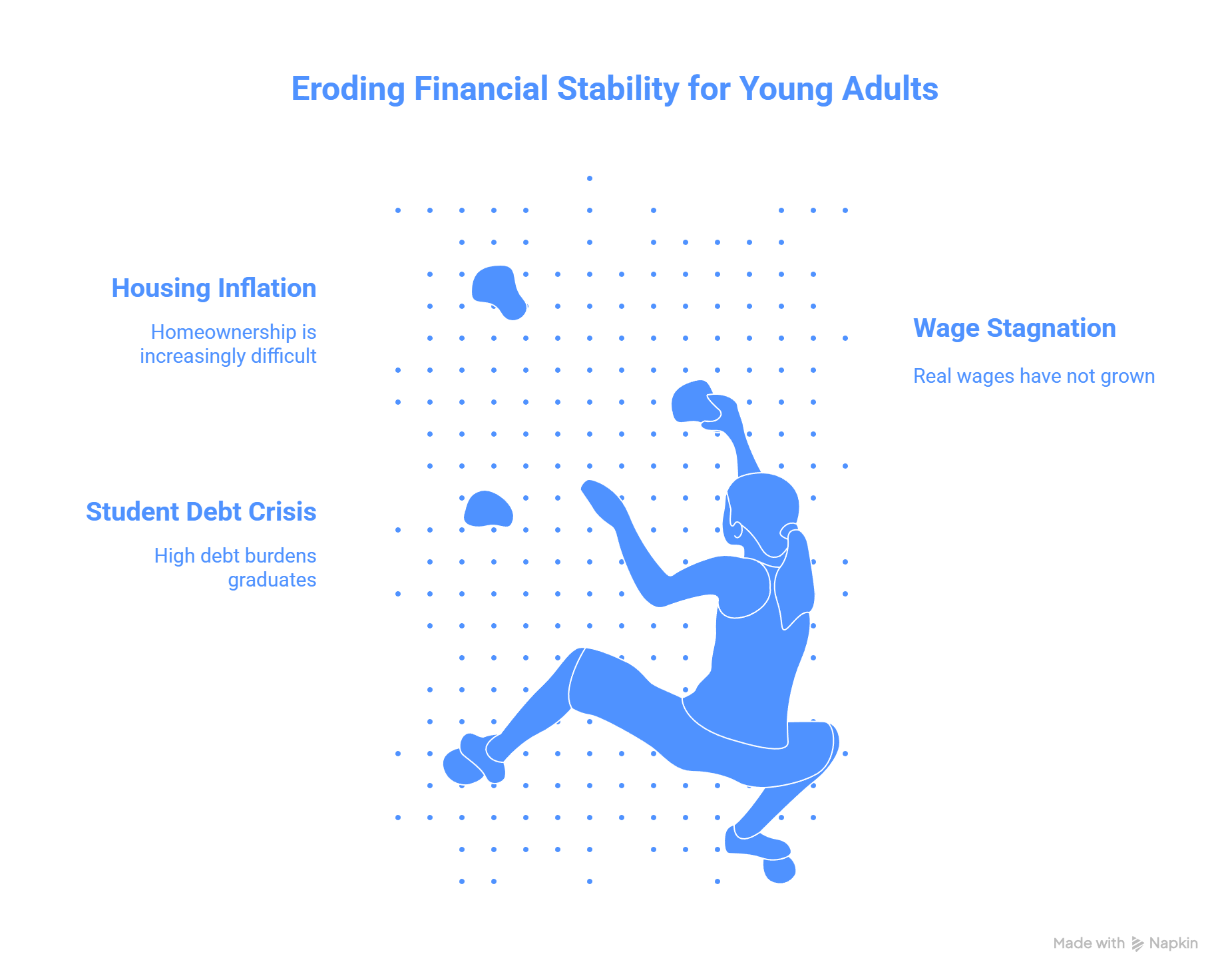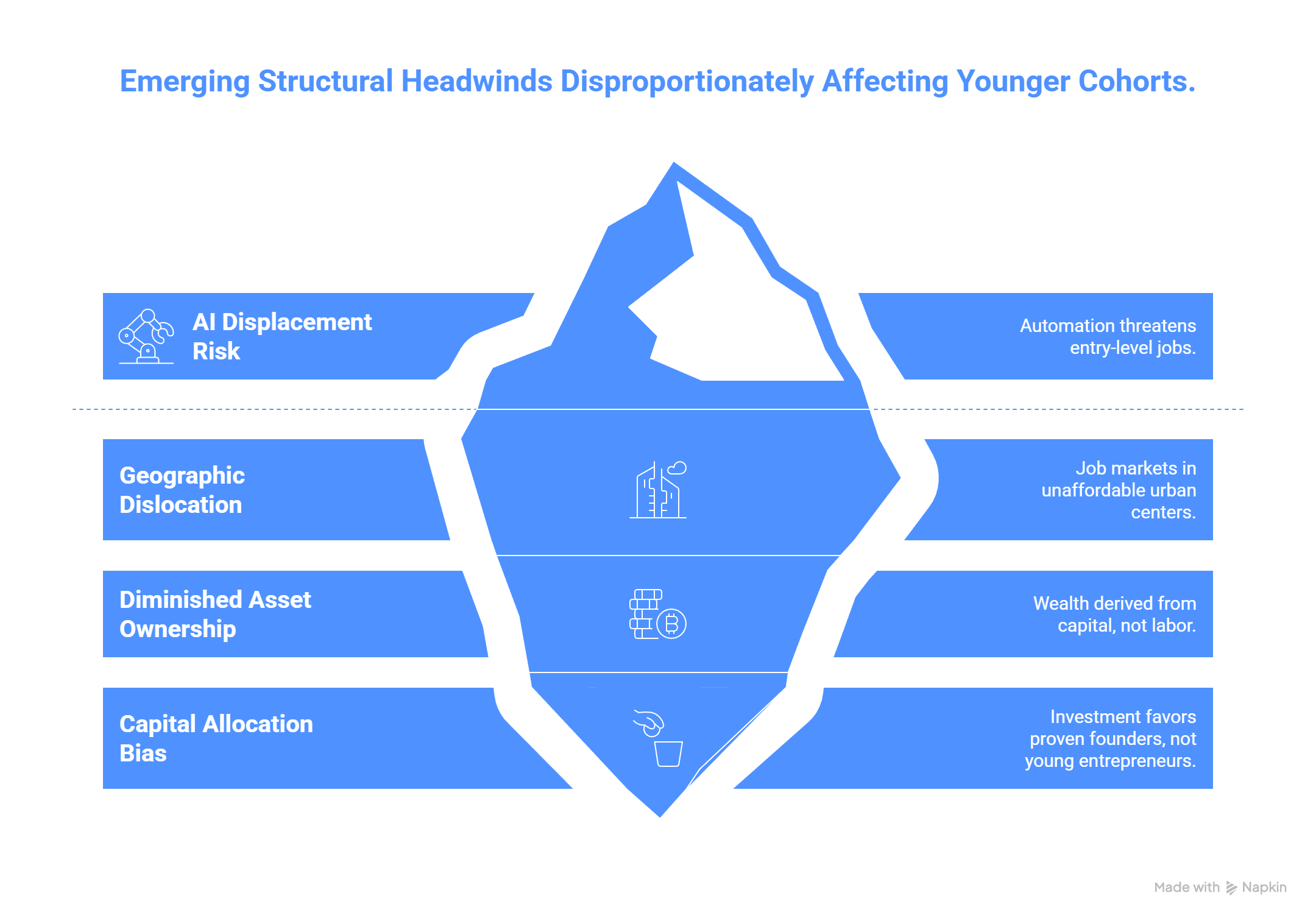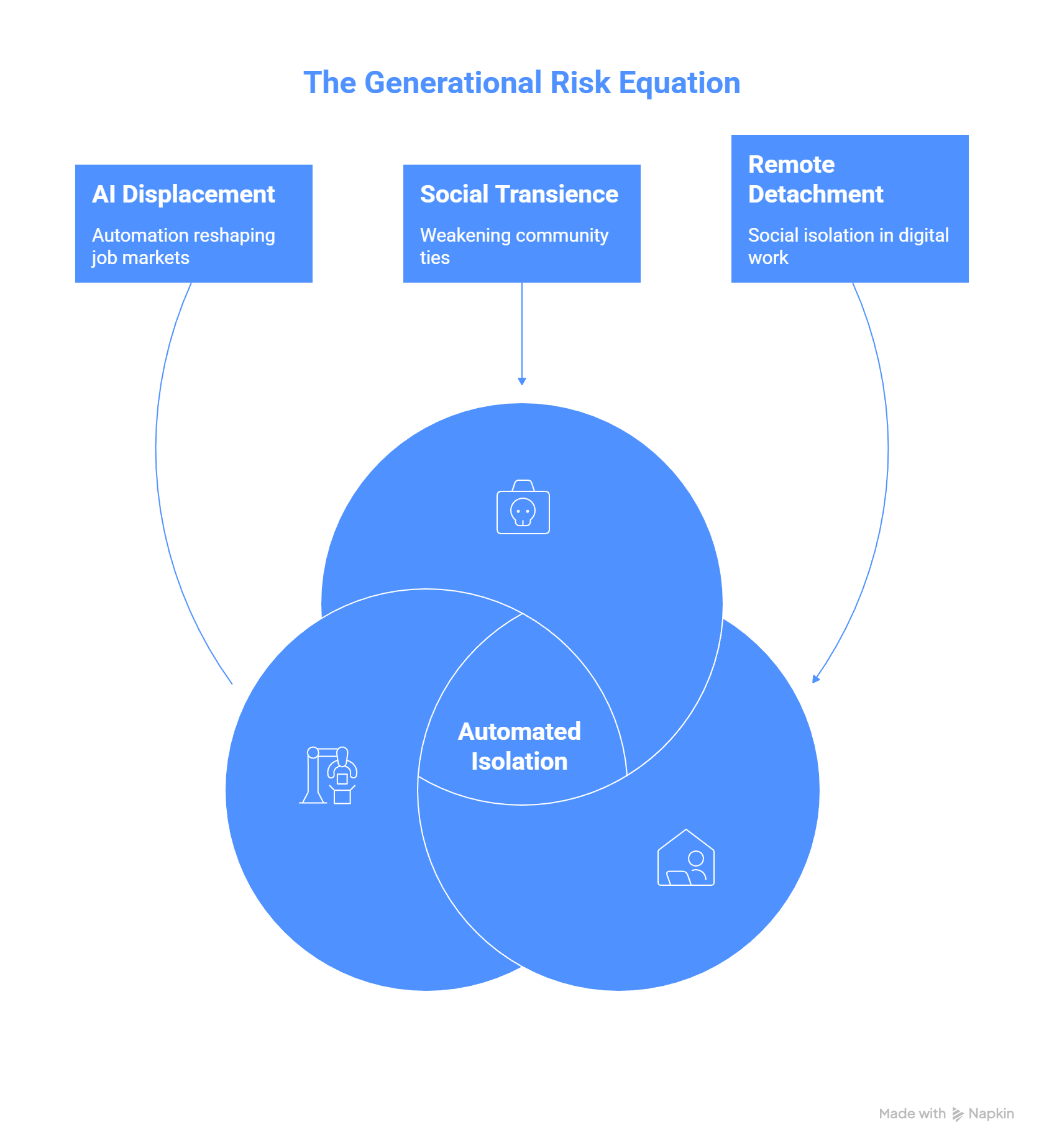Is Now a Good Time to Be Young? A Hard Look at Intergenerational Economics
Nov 10, 2025
Being young in 2025 carries profound contradictions. The promise of economic mobility, long associated with education, employment, and asset accumulation, has frayed. Today’s youth face structural barriers across multiple dimensions: access to capital, affordable housing, relevant employment, and future-proof skills. This is not a temporary setback. It is a systemic divergence between generational inputs and outcomes.

We propose a structured view of the issue using a simple 3-part framework:
1. The Collapse of the Traditional Mobility Engine
Over the past half-century, developed economies were underpinned by a clear formula for upward mobility:
-
Education → Employment → Asset Accumulation → Security.
This formula no longer holds. For Gen Z and late millennials, the data shows:
-
Student debt levels have surpassed $2 trillion in the U.S., with the average graduate carrying $37,000+ in debt.
-
Real wages have stagnated for new entrants despite productivity gains.
-
Homeownership rates for adults under 35 have declined to their lowest levels in decades, largely due to housing inflation outpacing wage growth.
Conclusion: The traditional pathways to financial stability are increasingly inaccessible to a majority of young people.

2. Emerging Structural Headwinds
The current economic architecture introduces four key structural challenges that disproportionately affect younger cohorts:
-
AI Displacement Risk:
-
Entry-level, cognitive white-collar jobs are increasingly automated.
-
Digital content, customer service, and junior analyst roles face major disruption.
-
-
Geographic Dislocation from Opportunity:
-
High-growth job markets are concentrated in urban centers with unaffordable housing.
-
Remote work offers flexibility but hinders social capital accumulation for early-career professionals.
-
-
Delayed or Diminished Asset Ownership:
-
Wealth is increasingly derived from capital, not labor.
-
Without early exposure to equity (in homes, businesses, or funds), wealth gaps compound over time.
-
-
Risk-Weighted Capital Allocation Bias:
-
Venture capital and institutional investment flows increasingly prioritize proven founders, elite networks, and repeatable models.
-
First-time, young entrepreneurs face tighter scrutiny, lower valuations, and limited funding cycles.
-

The Perfect Storm: A Generational Risk Equation
These four trends—AI displacement, remote detachment, social turbulence, and limited capital access—do not operate independently. Together, they form a generational pressure cooker:
AI + Remote Work + Social Transience + Capital Scarcity = A Perfect Storm
This convergence heightens inequality, undermines traditional career trajectories, and challenges assumptions about upward mobility. Addressing any one factor in isolation is insufficient. The system must be redesigned to accommodate the compound nature of modern risk.

3. Recalibrating the System: Strategic Interventions
To rebalance intergenerational equity and sustain long-term productivity, the following domains require policy and institutional innovation:
-
A. Education Reform and Risk Sharing
-
Shift to outcome-linked repayment structures (e.g., income share agreements).
-
Expand non-degree, credential-based pathways aligned with market needs.
-
-
B. First-Time Asset Access Mechanisms
-
Incentivize fractional homeownership and rent-to-own models.
-
Pilot equity-matching programs for first-time business founders.
-
-
C. Employment Infrastructure for Young Workers
-
Invest in national apprenticeship pipelines in AI, climate, and infrastructure.
-
Expand wage subsidies for firms hiring under-25s into strategic sectors.
-
-
D. Intergenerational Accountability Measures
-
Introduce long-horizon impact scoring for legislation (e.g., "Youth Impact Score").
-
Require youth representation in national planning, budgeting, and innovation councils.
-
Conclusion: An Age of Productivity Without Prosperity?
A system that demands resilience from the young without providing economic onramps will breed long-term instability. The youth of 2025 are more educated, more connected, and more entrepreneurial than any prior cohort. But unless institutions evolve to reflect 21st-century realities, we risk locking a generation out of ownership, influence, and upward mobility.
Rebuilding that bridge requires structural—not symbolic—change.
VCII Policy Brief | November 2025
We have many great affordable courses waiting for you!
Stay connected with news and updates!
Join our mailing list to receive the latest news and updates from our team.
Don't worry, your information will not be shared.
We hate SPAM. We will never sell your information, for any reason.


